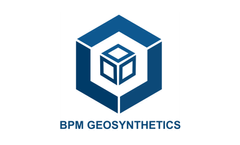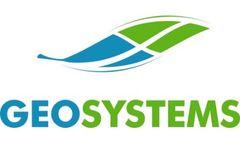Irrigation Channel Articles & Analysis
20 articles found
Geosynthetic Clay Liner (GCL) is a composite anti-seepage material made of natural sodium-based bentonite sandwiched between two layers of geotextiles (or geomembranes). Its core component, bentonite, swells in water to form a dense gel layer, which can effectively prevent water penetration and has both the inherent properties of geotechnical materials and waterproof and anti-seepage properties. ...
HDPE canal liner is the widely used geomembrane liner products and the essential lining system for the efficient use of water resources due to their features of lowest permeability, excellent anti-seepage and ultra stress crack capacity, etc. More than 45% of water used in the agriculture would be lost due to seepage. HDPE canal liner is an affordable solution to prevent water loss of ...
The United Irrigation District (UID) in Southern Alberta, Canada serves 34,400 acres of rural land through a series of canals, channels and pipelines running 236 km throughout the region. ...
These models incorporated the drainage and irrigation channel improvements, a reversible drainage discharge and irrigation intake pump station with salinity controls, 2 irrigation lift stations, 4 automated water‐level control gates, and several minor semi‐automatic or manual control structures. ...
ByInnovyze
Our study area in the People's Victory Canal Irrigation District of Henan Province in China has been transferring agricultural water to the city for municipal use. This study starts with an examination of the impacts of irrigation frequency, irrigation water sources, and irrigation water supply performance on crop yield and net crop revenue, using data from a survey of 182 households in the ...
One of the main problems in water management of irrigation systems is the control of the equitable distribution of water among different orifice offtakes. The difficulty of managing a canal is partly caused by the lack of knowledge of the canal state because the scheduled demand is often not fulfilled, since farmers extract more water than is scheduled and it is impossible for the watermaster ...
This study investigates the physical, socio-economic and institutional factors affecting water-use security among irrigating smallholder farmers in Msinga Local Municipality to recommend policy. Cluster analysis was used to classify farmers according to their water-use security status. The logit model was then used to investigate the socio-economic factors influencing farmers' water-use ...
Optimal design of channel cross-section is an important task in the hydraulic design of open channels. The traditional methods and models which neglect the frost heave are trial procedures and may result in failure of channels in design of irrigation channels. To improve the total cost, reliability and ...
Project Background “Different materials to protect canal liners had been tried in irrigation canals across the West over the past 15 or 20 years. One typical method uses a low cost earthen material like clay. Over time, however, these systems begin to crack and start to leak. It’s not a very efficient way to convey water,” notes Joe Kaul, Kaul Corporation, Presto ...
Our study area in the People's Victory Canal Irrigation District (PVCID), which is downstream of the Yellow River in China, has been undergoing agricultural water transfer to the city for municipal uses. Water supply condition data from PVCID are used to analyze the impacts of water reallocation on agricultural water supply quality, and field survey data in PVCID are used to examine the ...
Many communities were developing their own strategies to adapt, usually through more sophisticated management of their natural environment, such as channelling water into fish ponds and onto grazing pastures. In some cases, the programme simply helps them do what they already plan – by providing finance or technical expertise. ...
Considerable amounts of water can be saved by automating irrigation canals. The design of most of the practical automatic controllers rely on a simplified model of the irrigation canal. This model can be obtained from measured data (identification) or can be formulated (white box models) assuming simplifications in the physical concepts and using the canal geometry. Several models of this kind ...
Within the last 10 years throughout south-eastern Australia, there has been a rapid expansion of modernisation efforts by irrigation companies that has included installation of automatic control structures, the so-called total channel control (TCC) technology. ...
According to 91% of 273 respondents, water availability for rice irrigation has been decreasing over the last 20 years due to changing rainfall. ...
Compaction equipment is used to compress and/or compact different types of materials at a work site. In construction sites different tools and machines are used for different purposes, such as waste around the work area is compacted and then disposed or loose soil around the work site is compacted before the start of the actual construction work. While compaction equipment is mostly used to ...
The literature on the dynamics of irrigation management, in terms of the analysis of interlinked agrarian relations, is very limited. This paper attempts to get a detailed grassroots view of farmers' knowledge of various issues pertaining to the relationship between agrarian structure, land and water. Data from 200 sample cultivators of different farm sizes and 20 landless labour ...
Surveys of relic canals at the Oasis of Otrar in Kazakhstan have been used to re-construct patterns of agricultural water use for irrigation between AD700 and AD1500. Hydraulic simulation software was used to calculate the water carrying capacity of historical irrigation canal networks. An analysis of modern day irrigation systems has enabled the calibration of crop water use models and an ...
Our mismanaged world economy today has many of the characteristics of a Ponzi scheme. A Ponzi scheme takes payments from a broad base of investors and uses these to pay off returns. It creates the illusion that it is providing a highly attractive rate of return on investment as a result of savvy investment decisions when in fact these irresistibly high earnings are in part the result of consuming ...
This paper discusses the implementation of irrigation reform policy in the State of Andhra Pradesh, India. It reports on the impact of the introduction of participatory irrigation management (PIM) in two secondary canals (distributaries) in the Tungabhadra Right Bank Low Level Canal irrigation system. The empirical findings are that the rural elite has captured most of the seats in the water ...
Maintenance of irrigation infrastructure is essential to sustain food production and farmers' earnings. Given the shortage of funds for maintenance in developing countries, it is critical to understand the degradation of the function of irrigation systems so that optimal budget allocations can be made. A case study of Indonesia proposes an Infrastructure Density Index that can be used to justify ...










